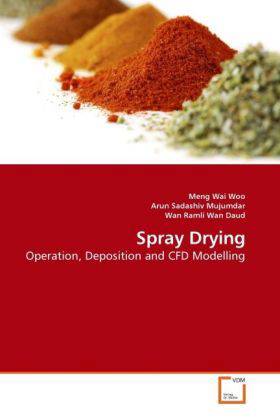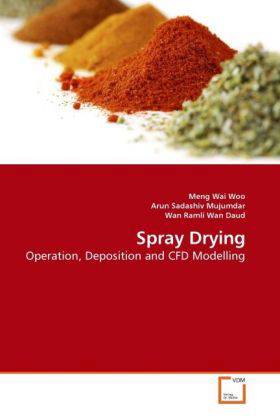
- Afhalen na 1 uur in een winkel met voorraad
- Gratis thuislevering in België vanaf € 30
- Ruim aanbod met 7 miljoen producten
- Afhalen na 1 uur in een winkel met voorraad
- Gratis thuislevering in België vanaf € 30
- Ruim aanbod met 7 miljoen producten
Zoeken
Spray Drying
Operation, Deposition and CFD Modelling
Meng Wai Woo, Arun Sadashiv, Wan Ramli
Paperback | Engels
€ 67,45
+ 134 punten
Omschrijving
Spray drying produces engineered powders in one step from liquid feeds with applications across numerous industries. One major problem in spray drying is potential deposition of particles on the internal wall of the spray chamber. Such a problem can be severe if the operating parameters for a particular new feed is not known or if modifications are to be made in existing operations. The first part of this book introduces a rapid systematic approach to optimize the operation of a spray dryer. A new concept is introduced to reduce deposition via dryer wall surface energy manipulation. A second approach in reducing wall deposition and also as a good modeling tool for spray drying is Computational Fluid Dynamic (CFD) simulation of the process. This book focuses on three aspects of spray dryer CFD simulations: droplet drying models, airflow model and model for product deposition. The ideas and concepts introduced in this book will be useful for engineers and scientists working on the wall deposition problem, optimal operation of a spray dryer as well as CFD modelling of the process.
Specificaties
Betrokkenen
- Auteur(s):
- Uitgeverij:
Inhoud
- Aantal bladzijden:
- 196
- Taal:
- Engels
Eigenschappen
- Productcode (EAN):
- 9783639231496
- Verschijningsdatum:
- 14/02/2010
- Uitvoering:
- Paperback
- Formaat:
- Trade paperback (VS)
- Afmetingen:
- 152 mm x 229 mm
- Gewicht:
- 294 g

Alleen bij Standaard Boekhandel
+ 134 punten op je klantenkaart van Standaard Boekhandel
Beoordelingen
We publiceren alleen reviews die voldoen aan de voorwaarden voor reviews. Bekijk onze voorwaarden voor reviews.











